"A birthday is just the first day of another 365-day journey around the sun. Enjoy the trip." -Author Unknown
Each of us has a birthday; mine is tomorrow, August 3rd. And while we're mucking around here on the ground, the Earth relentlessly orbits the Sun.
And while a sidereal year, or the time it takes the Earth to return to its same position in space, is not quite identical to a calendar year, it's awfully close. So much so, in fact, that with the exceptions of the planets having wandered a bit from year-to-year, you get the same night sky each and every year on your birthday.
For those of us in the Northern Hemisphere, this sight will greet you each cloudless night in the summer skies: the Summer Triangle. Even in a big city, the Summer Triangle is still easily distinguishable. Featuring the three very bright stars Deneb, Altair and Vega, this grand asterism is home to some of the night sky's most beautiful sights.
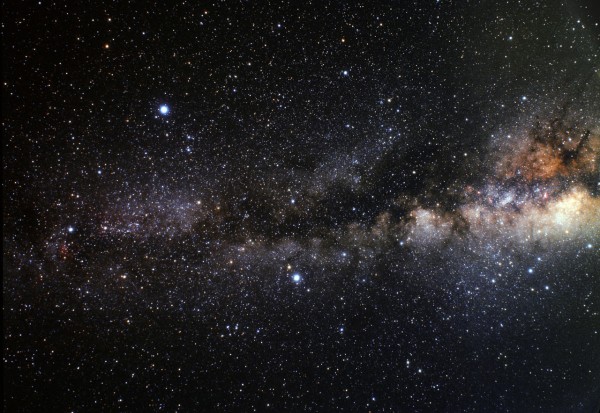
Get yourself some particularly dark skies, and you won't be able to miss the Milky Way, as it passes right through the heart of the Summer Triangle! But even if you can't see the galaxy where you are, there are some great sights to be had with even a small amateur telescope. In fact, just by navigating around the Summer Triangle, you can take a great tour of what's up there in the sky!
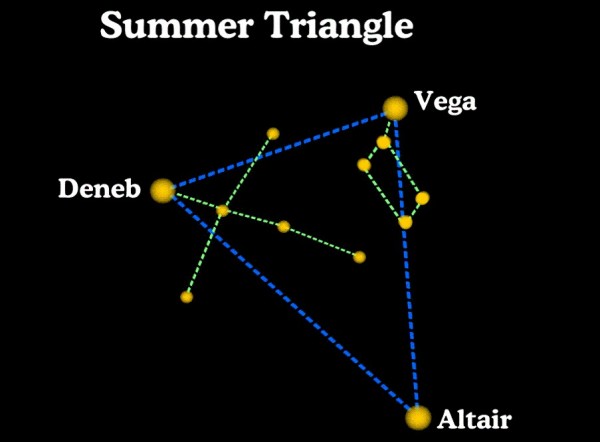
Here are a couple of the most basic navigation points, and feel free to refer back to the second image from the top: the parallellogram just beneath Vega and the curved cross that starts at Deneb. These stars are somewhat dimmer than the corners of the triangle, but are still easily visible in all but the most light-polluted cities.

The star at the bottom of the curved cross is named Albireo, and if you have a telescope, you'll want to start there.
Because Albireo is not only a binary star that's easily resolvable, its stars are two different colors. At 380 light years away, Albireo isn't the brightest binary in the sky, nor is it the only one with two different colored stars. But with the slightly brighter one a yellow-orange, and the slightly dimmer one nearly as bright and blue, Albireo presents even small telescope users with a brilliant contrast in color. These binary stars are so far apart that it takes around 75,000 years for them to make one complete orbit, and that's why they're easily viewable as two separate, distinct stars.
But don't stop there. Once you've spotted Albireo, take a look between it and Vega.

You'll see that parallellogram of four stars, with the brighter two closer to Albireo and the dimmer two closer to Vega. It's the brighter pair, Sulafat and Sheliak, that we're interested in this time. Head about mid-way between Albireo and the closer of those two stars, Sulafat, and you'll find the globular cluster, Messier 56, just slightly closer to Albireo.
With a radius of just 42 light years, and with hundreds of thousands of stars in there, Messier 56 is actually one of the less compact globular clusters. (They are rated on a scale for compactness from Class I to Class XII, and this one's down at Class X.) No amateur telescope can compare with what Hubble sees, of course, so it's worth taking a look and seeing what Hubble sees.
Gorgeous, to be sure. But there's quite a different sight to be had if we head the other way, halfway in-between Sulafat and Sheliak, those two bright stars in Vega's parallellogram. Because mid-way between them lies Messier 57, known better as the Ring Nebula.
While some of you with very small telescopes may see it appear as a greenish ring, this planetary nebula is one of the brightest in the sky, visible even in areas with considerable light pollution.
Of course, you stand no chance of competing with Hubble, but having those Hubble images may inspire you even more, once you know the detail of what you're looking at.
But now, let's head away from Vega and that parallellogram, and over to Deneb and the curved cross we were looking at earlier.
If you head on down that cross from Deneb, your first stop will come to the star at the crux of it, the second magnitude star Sadr.

Very close to Sadr, headed back just under one degree towards Deneb is the beautiful open star cluster NGC 6910.
Star clusters often form in dusty areas, and if you want to see an open cluster with some accompanying nebulosity, you might want to head over to Messier 29, the cluster down and to the left of Sadr with respect to Deneb.
(Wikipedia is quick to insult Messier 29, calling it "coarse and less impressive," but I'll let you be the judge.)
But there are two more objects that are great for viewing in this summer triangle if you're willing to take the trip on over to the third vertex: Altair.
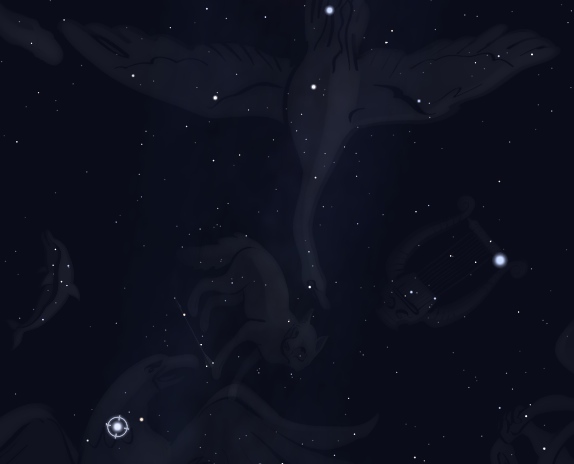
And near Altair, just inside the triangle, you'll find (if you have lousy vision) three stars in a row. If your vision's a bit better, you can see that the "first" star is actually two stars separated by maybe half-a-degree, and there is a slightly dimmer "fourth" star.
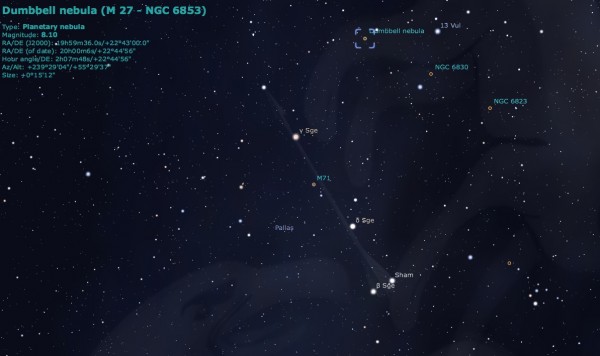
There are two separate objects worth looking at through any telescope: a very diffuse globular cluster, Messier 71, and another spectacular planetary nebula, Messier 27. Let's take a look at the globular cluster first, right in the middle of the line that these four stars make.
Originally confused with an open star cluster (up until the 1970s!), Messier 71 is now known to be a globular cluster about 9-10 million years old. Located 12,000 light-years distant, with a radius of maybe 13 light years, its stars are relatively metal-rich for a globular cluster, which helped add to the confusion. Without a bright central component, this globular cluster makes an interesting juxtaposition to Messier 56, which has a prominent one.
Of course, Hubble gives us quite a view of Messier 71, as it does of everything.
But if you instead head up to the fourth and faintest star of this line, make a right turn, and head maybe two or three degrees away from it, you'll run into Messier 27, the Dumbbell Nebula.
If you already looked at the Ring Nebula (Messier 57), hitting the Dumbbell Nebula means you've successfully observed half of the planetary nebulae known to Charles Messier. (The other two are the Owl Nebula, located in the Big Dipper, and the Little Dumbbell Nebula.)
Even a smaller telescope can start to reveal some of the finer features of this bipolar nebula, such as its colors and its asymmetry.
A larger telescope, of couse, can even reveal the central white dwarf star left behind by this recently deceased Sun-like star. Every year on my birthday (and all summer long), so long as there are clear skies in the Northern Hemisphere, all of these objects will be visible.
But there's one last thing worth looking for, even if you don't have a telescope. Simple binoculars or very, very dark skies will reveal one of the coolest asterisms available. Draw an imaginary line from Altair to Vega, and head about a third of the way there. And what you'll see, if you look at what I'm talking about, is known as Brocchi's Cluster, or (perhaps more aptly) the Coat-Hanger Cluster.

Image credit: Dan Lessmann, who can be found at http://www.danlessmann.com.
Not a true cluster at all, but rather a chance alignment of stars, this is still one of the most striking objects in the sky. And that's what's up in the sky -- in celebration of my birthday, I'm sure -- tonight!
- Log in to post comments




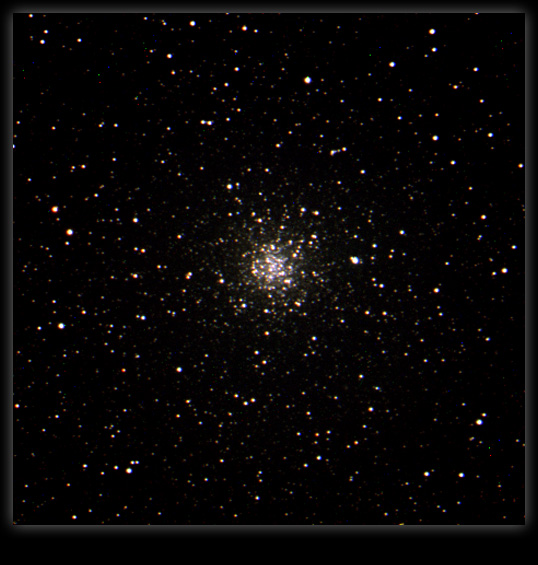



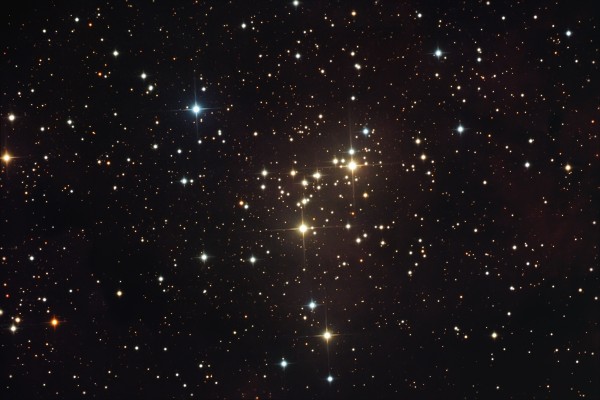

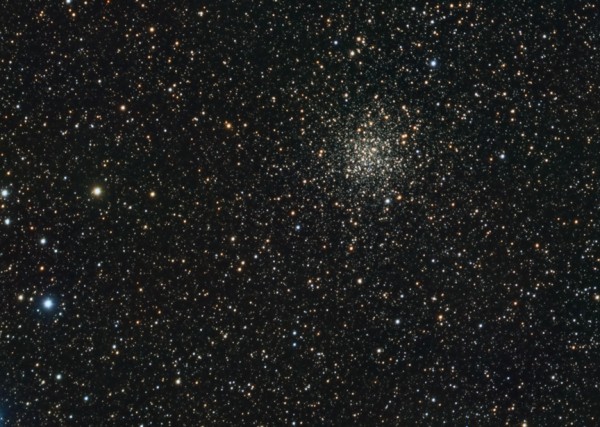



Great post. I was just standing on my balcony looking at the stars and using Heavens Above. I'm not good with constellations.
I also see that a comet--Comet C/2009 P1 Garradd--is near the Summer Triangle as well, though it's at a magnitude 8.8 (and unlike your other mentions won't be in the same place every year).
A very happy birthday to you! Just thought I'd take this opportunity to comment and thank you for your blog. I read it each morning on the Tube to work... underground yet still with my head in the stars ;-)
Thank you!
Happy birthday!
Somebody please fix the 2nd paragraph, 1st sentence of the Albireo wikipedia page - distance...
Those are nearly exactly the same ones as I use to show off the night sky to someone who hasn't looked through a telescope:
Albiero
Eta Lyra
Ring Nebula
Dumbbell nebula
M13/M34
M81/82 (if I have a larger scope or it's really dark)
cr399 (the coathanger) if I have a widefield view
NGC457, Et Cluster (always a laugh)
Double Cluster
Happy Birthday Ethan! Here's to another 365 days of great blogs! Keep 'em coming!
Got anything for Dec 27?
Heh, took four months, but you finally took two of my suggestions from one of my first comments here. :)
Happy integral-orbit day! My mother's birth sky is one night later than yours, so we're prepping here anyway.
Darn. I could have used this list a few weeks ago when I brought my telescope up to a cottage! Oh well. Was able to find the Ring Nebula and M56. Aside from that I was just wandering the sky. Still learning. I might be able to take another trip north shorty, so I will keep the list handy! Thanks Ethan and happy b-day.
Happy birthday! And thanks for the nice article! :-)
graeme, you can get a good shot of Vega, Ring Nebula and Albiero (including separation of the stars) with a 100mm telephoto lens on a modern DSLR stuck on a tripod for 10-20 seconds. At that scale, all three end up on the picture and you get enough resolution to see the dark center of the ring nebula.
Happy Birthday to you! Many blessings, happiness, love and wonderful Star Gazing to you!! I enjoy your posts on Astronomy and I have learnt a lot thanks to you!! Wishing you all the very best for your Special day! :))
It's not in the area you are talking about, but my favorite summer object is M11. Easily spotted by naked eye if you have reasonably dark skies.
Great article, keep it up.
Happy birthday! Thanks for the wonderful work you do.
Happy B-day, man.
Have fun getting older!
P.S. +15 bonus points for use of the word juxtaposition.
Happy Birthday Ethan! Here's to another 365 days of great blogs! Keep 'em coming!
Hopefully this isn't a stupid question:
Several of the photos here (and in countless elsewhere) display a photographic artifact of bright light sources that I've always been curious about.
What causes the distinct set of lines that cross the axis of bright light sources in photographs?
The phenomenon is visible in the above photos of NGC 6910 and Messier 71 - and most distincly in the Albireo photo.
It's diffraction from the "spider" (the vanes that holds the secondary mirror in place in a newtonian design telescope).
Remember, the thinner the object, the wider (and dimmer) the diffraction pattern. You'll find the diffraction patterns are 90 degrees from the vanes producing them.
Other designs don't use a spider to hold the secondary (or don't have a secondary at all), so show no patterns. Others have more than four or less than four vanes and others use a curved vane that smears the diffraction pattern around and makes it less visible.
The brighter the object, the longer the diffraction gets to display itself before dimming beyond visibility. And an extended object wipes out the diffraction pattern from one spot's effect with the light from another spot (whose diffraction pattern is wiped out by the first spot, amongst others). An extended object is also dimmer per dot of light, reducing the effect even more.
The secondary itself also produces a diffraction pattern, but it's rather thicker and circular, so its effect is to smear out any object a little evenly around it. This is why telescopes with a secondary mirror (SCT or Newtonians, for example) have lower contrast than ones without (Refractors).
Happy Birthday, Ethan!
'Starts With A Bang!' has long been one of my favorite science blogs and I look forward to each new post. I'm greatly honored that you choose one of my images (M29) for this post. Keep 'em coming!
Happy belated birthday Ethan!
Thank you for such a wonderful blog!
Question: what's the program you're using to display the constellations?
I'm getting ready for a special birthday celebration camping in Oregon and was so happy to find your post and to know we both celebrate the same b-day! Here's to happy Aug 3rd star gazing! and thank you for giving me a great start to my bday star night!!!
This is really good! Have been studiously noting all this down for the evening's observations!
Really appreciate getting some slightly more niche targets like this but still with plenty of detail. Would love an article like this for various other regions of the sky!